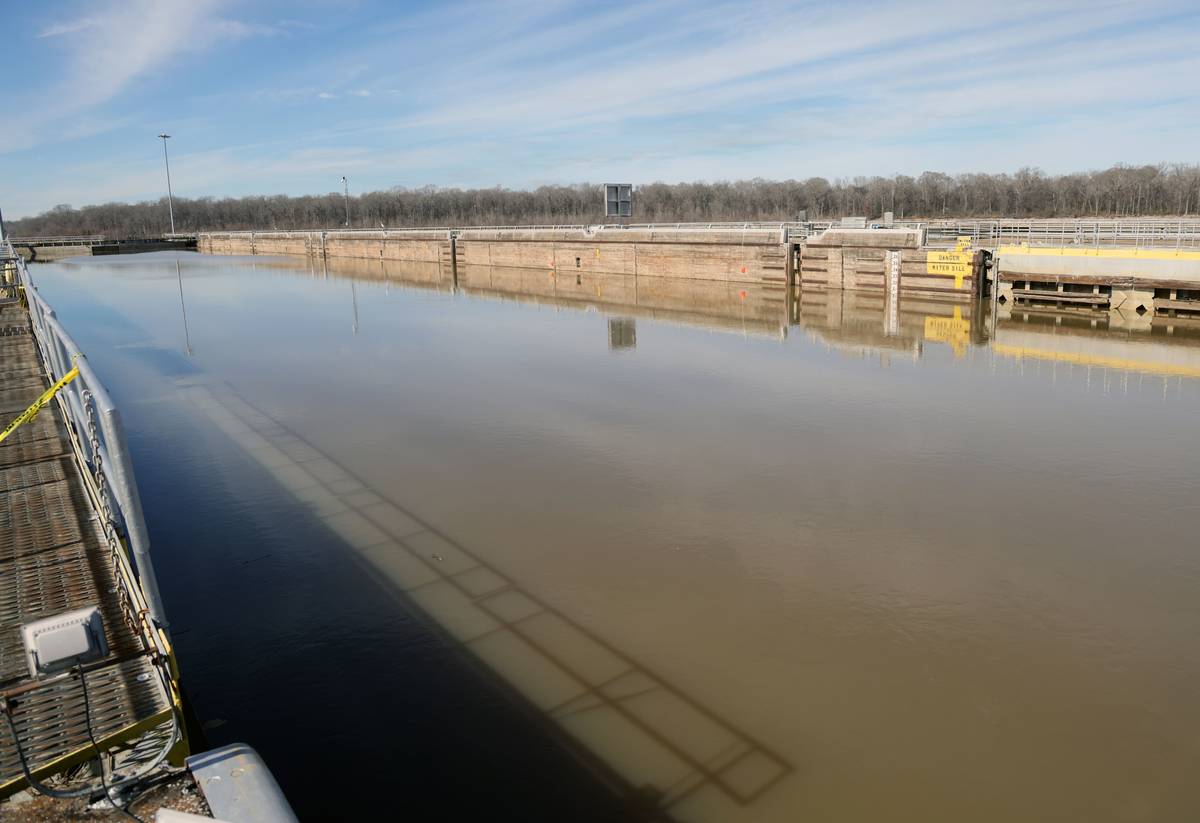Column
Inland Waterways Infrastructure
Demopolis: A Cautionary Tale for Increased Infrastructure Investment
Demopolis Lock—which suffered a recent catastrophic failure—is a cautionary tale for other locks and those in Congress and the White House who may fail to see the urgency and importance of investing in the inland waterways system.
By Tracy Zea, President & CEO, Waterways Council, Inc.
The nation’s inland waterways lock and dam infrastructure, largely constructed in the 1930s, has seen modernization and rehabilitation across the system, albeit very slowly. Despite those efforts, lock failures continue, and the risk of failure persists.
While the inland waterways network facilitates the transport of one-third of the United States’ gross domestic product (GDP), the system relies on lock and dam infrastructure constructed in the early 20th century. This infrastructure has far exceeded its original 50-year design life. Deterioration has made these projects more susceptible to failures, resulting in unscheduled closures or stoppages that increase congestion and the cost of transporting waterborne commodities, compounding the effects of inflation on consumers.
In mid-January, the Demopolis Lock, located after the junction of the Tombigbee and Black Warrior Rivers in Alabama, had a catastrophic failure when the concrete miter sill of the lock chamber failed, sending water rushing under the lock’s gate. According to the U.S. Army Corps of Engineers, the lock typically experiences 12 daily transits of various critical cargoes, such as feedstock, steel, coal and crude oil across Alabama and beyond, and almost 12 million tons of cargo transit through this lock on an annual basis.
The Corps of Engineers is hard at work to fix the 69-year-old lock (which is one of the newer locks on the inland waterways system), but operators must now take an alternate and longer route to deliver their goods. For example, a trip from Demopolis Lock to Mobile normally takes about a week utilizing the Tennessee-Tombigbee Waterway. It is now taking about a month as the new route requires accessing the Mississippi River. Costs to shippers, and therefore to consumers, are increasing as well due to the closure. Some companies anticipate having to lay off some of their workforce. If repairs go as planned, the Corps currently expects the lock to reopen in May.

Demopolis is a cautionary tale for other locks and those in Congress and the White House who may fail to see the urgency and importance of investing in the inland waterways system.
Fortunately, the nation has increased its attention and commitment to foundational infrastructure that for too long had been ignored or bandaged. When the Infrastructure Investment and Jobs Act (IIJA) passed in 2021, it included $2.5 billion for inland waterways, one of the largest allocations for the Corps’ work.
Within the IIJA, four inland construction and major rehabilitation projects were considered “funded to completion.” However, due to inflation, supply chain delays, and workforce challenges, those projects now require hundreds of millions in additional funds to complete construction and become operational.
To date, only about $361 billion of the IIJA law’s total $1.1 trillion in spending has been awarded to specific projects, and only a fraction has gone to projects that have been completed. But, according to news reports, the Biden Administration wants to increase the number of shovels in the ground for infrastructure law-related projects in 2024, with an aim of getting projects out the door and contracts in place within the next 10 months. We hope that is a positive sign for our lock and dam system.
While the IIJA relates to spending, the Water Resources Development Act (WRDA) 2024 – the biennial water resources legislative authorization vehicle – offers an opportunity to make important policy changes related to waterways infrastructure. WRDA 2024 is well underway within Congress in the committees of jurisdiction (House Transportation & Infrastructure (T&I) Committee and the Senate Environment & Public Works (EPW) Committee).
WCI’s request for WRDA 2024 is that all inland waterways construction and major rehabilitation projects funded by IIJA remain at federal cost (rather than the cost-share formula in place for regular-order construction and major rehabilitation projects). This is consistent with Congress’ intent – to fully fund inland waterways construction projects at 100% federal cost to achieve an accelerated return on investment. Ensuring projects funded by IIJA remain 100% federally funded will allow the nation to realize economic return more quickly, reduce the supply chain’s environmental footprint, and address uncertainty in global agriculture and energy markets.
Currently, capital improvements to the inland waterways transportation system are cost-shared through a 29-cent-per-gallon fuel tax imposed on commercial users of the system which are deposited into the Inland Waterways Trust Fund (IWTF) to help with recapitalization of the system. The current cost-share requirement is 35% from the IWTF, with the remaining 65% from General Treasury funds, both appropriated to the Corps of Engineers in an Energy and Water Development appropriations bill. In providing IIJA funds to the Corps of Engineers, Congress waived the cost-share requirement for inland waterways construction and major rehabilitation projects funded by IIJA, recognizing the importance of accelerating the pace to complete projects to strengthen America’s supply chain and stay competitive in global markets, further highlighted by Russia’s war on Ukraine.
WCI hopes the cost-share for inland projects funded by IIJA is modified in WRDA 2024. If not, planned capital improvements across the inland waterways transportation system will be jeopardized and needlessly delayed, further hamstringing the economic and environmental benefits these projects provide to the nation.
A final WRDA 2024 bill may be considered by the House and Senate this spring, with hopes to enact a final law by September.
About the Author
Tracy Zea is president & CEO of the Waterways Council Inc., a national organization that advocates for a modern, efficient and well-maintained inland waterways, including lock and dam infrastructure, and channel maintenance.
